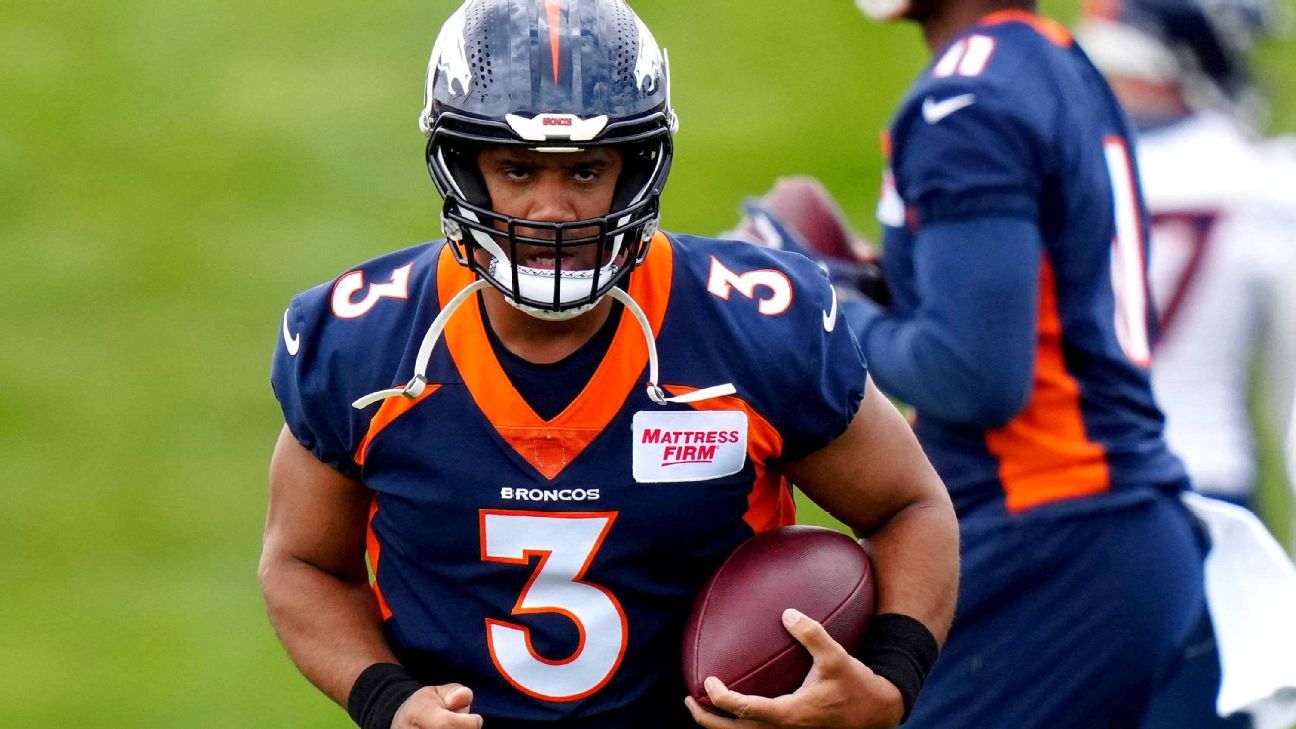ENGLEWOOD, Colo. — As the Denver Broncos concoct an offensive playbook that fits quarterback Russell Wilson, one of the most significant items is making sure he gets hit less while maintaining his mobility.
Because as Hall of Famer John Elway has said with a laugh, there is an “age multiplier” when it comes to sacks. If a quarterback was over 30 “a hit counts as two every time, and if they’re over 40 it’s like three and I didn’t even make it to 40 as a player.”
Wilson enters the 2022 season at 33 years old — turning 34 on Nov. 29. While there’s no official punishment odometer, the Broncos must find a balance between Wilson’s mobility, ability to save plays and the hits he will take.
“It’s all about the command of the system,” Broncos coach Nathaniel Hackett said when asked about Wilson’s progress. “We want to build this thing completely around him and make sure that he’s comfortable and watch him come alive. I think he did some awesome things [in practice] utilizing his athleticism, and at the same time, being just a pure drop-back passer.”
The Broncos would like Wilson to be a long-term solution at the position. They covet his penchant to create on the move and elude defenders. They love his tenacity to make something happen even if things don’t go well after the snap. To this point, his health has rarely been an issue, missing three games in 10 seasons — all last season after finger surgery.
Wilson has been one of the most sacked quarterbacks in the league over the past decade, though. Sacks are not always the best indicator of who’s holding the ball too long or which team isn’t holding up in protection enough, but they are still hits on the quarterback.
Wilson has been sacked at least 40 times in eight of his seasons, including a league-leading 48 in 2019 when he tied with Matt Ryan and Kyler Murray. He suffered a career worst 51 sacks in 2018. The only two seasons he has been sacked fewer than 40 times were in 2012 (33) as a rookie and last season (33) when he missed three starts.
Wilson was asked last week if he believed playing from the pocket would be the priority in the Broncos’ offense, and he said, “Yeah, for sure. I think everything starts from the pocket — to be able to have control of the game through the pocket.”
He added, “But also outside of the pocket. You have to be able to dominate both.”
Protection issues have consistently hampered the Broncos’ passing game during the post-Peyton Manning era, especially when they opened the formation with three wide receivers. As a result, the Broncos have seen their quarterbacks harassed into mistakes.
Wilson’s ability repairs much of that, but Hackett has promised a run game good enough to help keep defenders away. A solid run game will also make play-action passing an effective tool for Wilson. And while Wilson can extend plays, the Broncos will also look for him to do his part to move the ball more quickly.
Hackett, who spent three seasons as the Green Bay Packers offensive coordinator as he watched Aaron Rodgers consistently conjure the improbable on the move, concedes Wilson’s mobility is a benefit. And that it is part of why the Broncos sent five draft picks and three players to the Seahawks to acquire the quarterback. How they mesh Wilson with the scheme and the desire to keep him on the field will take some responsibility from all involved.
“Even when you’re out here [at practice] and everybody thinks that they sacked him, you just laugh because when you watch the tape and there are a lot of times he gets out of things,” Hackett said. “He bobs and weaves, and then all of a sudden, scores touchdowns.”
